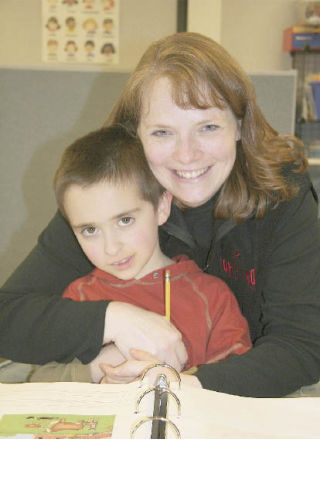North Bend school program helps
children with autism
Valley mother Leslie Moon felt like she had lost her son when he started showing severe signs of autism, but a special education program at North Bend Elementary School has given her hope that he could have a bright future.
Trevor seemed to progress normally in infancy, but stopped making eye contact and showed other signs of developmental disability when he was a little over a year old. He was diagnosed with profound autism, a disability that typically appears during the first three years of life and affects a person’s ability to communicate and interact with others, according the Autism Society of America’s Web site.
Autism is defined by a certain set of behaviors and affects individuals differently and to varying degrees. In an effort to cope with the world around him, Trevor will “stim,” or make repetitive body movements like hand-flapping, jumping and vocalizations, Leslie said.
There is no known cause and no known cure for autism, which affects one in every 150 American children, and almost one in 94 boys, according to a February 2007 report by the Centers for Disease Control and Prevention.
Part of Snoqualmie Valley School District’s response to the fastest-growing developmental disability is a three-classroom program for autistic students at North Bend Elementary School. The program, which aims to build basic life skills while holding students to high academic standards, has helped Trevor make big strides, Moon said.
“He won’t be completely integrated in society any time soon, if ever, but we’re giving him the best chance of that,” she said. “What he has accomplished is unbelievable. We always knew he was a smart kid, and they’re pushing him past what he would do if he had the choice.”
Special classrooms
In the classroom, special education teacher Sally Combs sits Trevor on her lap and holds her hand over his as he grasps his pencil, encouraging him to focus on the reading assignment at hand. This physical approach to teaching is one of many ways Combs adapts to the needs of her kindergarten and first-grade students, who come from across the spectrum of autism.
At the next table, a para-professional educator helps a first grader with a very visual exercise designed to help him write complete sentences.
The students’ needs and behaviors mandate the presence of almost as many educators as students in the classroom.


